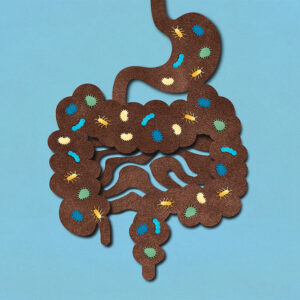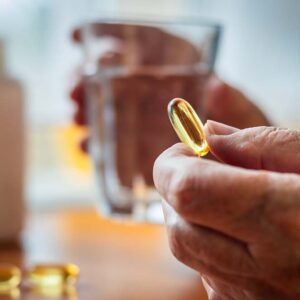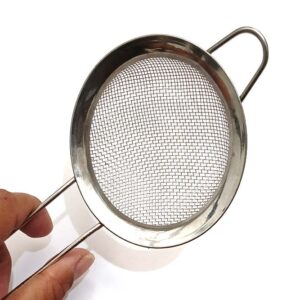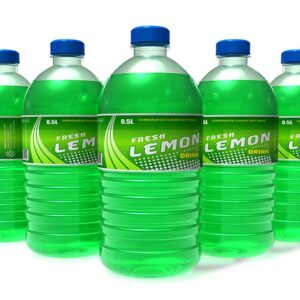
Stevia: A Sort-of-Natural FDA Approved Sweetener
- Isolate, synthesize, and add fillers for FDA approval
- There’s no sweet $70.4 million sales increase without a trademark
- The whole story on where to buy natural stevia
Dear Reader,
Last week’s Living Well Daily article about sweetened drinks really flooded the mail bag with reader responses.
Thanks so much for taking the time to drop me a line.
Also, my apologies if I haven’t replied to you yet — I will. It’s been a busy week over here. We have something very exciting lined up for you in the coming weeks.
Back to the mailbag…
Many of you wrote in to request an article about sugar-free sweetening options. Most requested were stevia and xylitol.
While some of you may have already heard of these or could be currently using them, there may be some shocking facts you don’t know about them.
So today, by popular demand, we will dive into the composition and best-buying practices of stevia sweeteners.
In a following article, I will get down to the nitty gritty on xylitol.
Thanks again for the article suggestions. Keep them coming! nmoore@lfb.org
Where’s the Real Stevia?
“Do you all have stevia?”
“Yes, we do. It’s in the green-and-white packages on the condiment bar.”
“Oh, that’s not real stevia. That’s synthetic sugar alcohols made from GMO corn.”
“Oh, yikes… I’m so sorry. It’s what our supplier gave us when we ordered stevia.”
To put this conversation in context, I did a stint as a barista while completing graduate school.
The coffee company I worked for is an organic and fair-trade business. So I felt like a heel as I explained to a customer that the only stevia available was not “real” stevia.
I shortly solved the condiment bar mystery when the operations manager told me we got the wrong sweetener from the supplier and the real stevia would be there in the morning.
At the time, I was too preoccupied with water quality research (part of my thesis project) to go down the not-so-natural stevia rabbit hole.
But these days, I am happy to investigate. I will share what I have found about the not real stevia at the coffee shop in a moment.
First, let’s talk about what real stevia is.
Stevia is a plant indigenous to Central and South America. The leaves contains a potent, nontoxic, and natural sweetener. In fact, stevia is up to 200 times sweeter than sugar.
But the best news about stevia — its calorie free.
This is great news if you are trying to cut out sugars.
Stevia’s sweetness comes from the combined effects of the natural compounds rebaudiosides and steviosides.1
Natural stevia, also called crude or whole-leaf, is available in a liquid or granular form. This makes stevia an easy solution for sweetening drinks and for cooking.
Crude or whole-leaf stevia is available in the U.S. as a dietary supplement but not as a food additive.
This means you can purchase it to add to your home-cooked meals or beverages, but it’s banned from processed or manufactured products.
Why?
The FDA has approved only the rebaudioside compound, also known as rebiana or reb A, for human consumption as a food additive.2
Natural Sweetener: FDA Style
So why would the FDA not allow whole-leaf stevia into processed foods? Here’s their reasoning:
“FDA does not consider their (crude and whole-leaf stevia) use in food to be GRAS (generally recognized as safe) in light of reports in the literature that raise concerns about the use of these substances. Among these concerns are control of blood sugar and effects on the reproductive, cardiovascular, and renal systems.”
Huh?
That’s weird…
The FDA has approved many synthetic sweeteners with questionable safety. Aspartame, saccharin, and sucralose, to name a few.
With the negative health effects of FDA-approved synthetic sweeteners being a hot research and news topic these days you would think they might take a closer look at a natural sweetener already in use as a food additive in many countries, including Japan.
Note: I scoured PubMed for an hour to find a study indicating that crude stevia could have negative health effects but didn’t find anything specific. It’s certainly possible I missed something. If you have any information regarding this, please forward it to me. nmoore@lfb.org
In 2008, food giants Cargill and PepsiCo were able to isolate reb A as the least bitter and sweetest compound in stevia. Shortly after, the FDA approved this stevia compound as a GRAS food additive.
But what if this isolation of reb A makes this natural sweetener less natural?
Herb pharm scientist Kevin Spelman, Ph.D., had this to say about it:
“Natural used to mean whole, as in holistic, but the concentrated extraction of one particular fraction of stevia that exists in the little green packet is a far reach from how stevia appears in nature.”4
In addition, Spelman questions the safety of the FDA-approved stevia. Plant chemistry is complicated. It is possible this “isolation” of reb A may have other consequences. He went on to comment:
“Once you extract a molecule from a plant, the plant’s safety profile changes. If you extract a single molecule from a plant, you are potentially bypassing the inherent safety mechanism that is typical of whole-plant extracts.”4
Yikes!
This raises other questions. If the commercial stevia in your food is an isolated compound, where is it coming from and what else might be in it?
1 Percent Chemically Engineered Stevia Extract
Since the approval of reb A, stevia products have been flying off shelves. Sales jumped from $2.1 million to $72.5 million in a three-year period.4
But most of the stevia products sold in stores contain only a fraction of stevia extract.
In fact, Truvia, a popular stevia product, contains 1 percent stevia extract. And this tiny fraction is the isolated and purified reb A. This way, Cargill can trademark the Truvia formula and continue to make money on it.
The main ingredient of the Truvia formula consist of erythritol, a sugar alcohol.
Like other sugar alcohols, erythritol exists naturally in small amounts in fruits. However, sugar alcohols are easily duplicated in labs.
In the case of Truvia’s erythritol — it’s chemically extracted from bioengineered corn and then purified to produce a crystal form.5
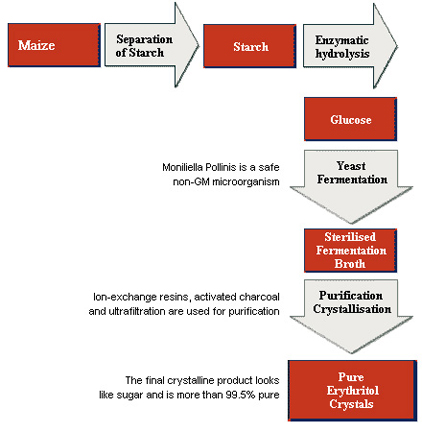
The erythritol manufacturing process Credit: Cargill Foods6
But Truvia isn’t the only not-so-natural offender.
Stevia In The Raw and PepsiCo’s Pure Via, other popular stevia products, also contain more than just stevia.
While there is no erythritol in Stevia in the Raw or Pure Via, there is dextrose and/or maltodextrin. These are bulking agents included to dilute the stevia’s sweetness and add volume to the formula.7
Dextrose and maltodextrin are corn-based carbohydrates. While they won’t keep Stevia In The Raw from being gluten-free, it is possible the corn it’s made from could be GMO.
In either case, staying clear of any additional lab-created or genetically modified ingredients is a good practice.
Natural Selections
In my opinion, keeping synthetics out of your is an important health decision.
Since food manufactures alter, synthesize, and manufacture their stevia products, whole-leaf stevia extract is the only natural choice for consumers.
Whole-leaf stevia is typically in the dietary supplement sections at stores and markets. Avoid all stevia products in the sweetener section as these are the chemically altered stevia selections.
Also, there is a large selection on Amazon.com. I recommend the SweetLeaf brand.
Whole-leaf stevia may have a more bitter or licorice-like flavor than its manufactured counterparts. Experimenting with different brands may help you find the most enjoyable selection for your palate.
Be sure to carefully read ingredients. If you aren’t familiar with a certain ingredient, research it.
And even though whole-leaf stevia is a natural sweetener, use it sparingly. As we have seen with other sweeteners, just because it’s non caloric doesn’t mean it can’t impact your health.
If you have a favorite stevia brand or anything else you would like to share, write me! nmoore@lfb.org
Live well,

Natalie Moore
Managing editor, Living Well Daily
P.S. There’s good news about stevia research. A study found consumption of stevioside, a stevia compound is connected to the cell death in breast cancer and decreases cancer-creating stress pathways in the body.8 Yay, stevia!
Sources
[2] Is Stevia an ‘FDA approved’ sweetener?
[3] Aspartame Associated with Increased Risk of Blood Cancers in Long-Term Human Study
[4] Stevia: Too Good to Be True?
[5] Lawsuit questions natural claims of Truvia
Written By Natalie Moore
Natalie Moore is a dedicated health researcher with a passion for finding healthy, natural, and science-based solutions. After a decade of direct healthcare experience in western and natural medicine, she was involved in public health research before joining Living Well Daily.
View More Free Articles
Mailbag: When to Worry About Memory Lapses
“I’ve been experiencing some memory lapses recently, and I’m worried it might be early signs of Alzheimer’s disease. My mother also had it. What symptoms should I look out for?” – Ann Hi Ann, It’s important to recognize that some degree of memory loss is a normal part of life. Our brains constantly process and...
The Unforeseen Link Between Your Gut and Your Waistline
As the weather warms up and summer approaches, many of us start thinking about shedding those extra pounds… We dust off our gym memberships, stock up on salad greens, and vow to finally fit into those shorts from last year. But what if I told you that the key to achieving a healthy weight might...
Defy Aging with the Sunshine Vitamin
If there’s one thing you absolutely must do for your health, it’s to maintain healthy vitamin D levels. I can’t stress this enough. And if you think vitamin D is only good for beefing up your bones, think again. Because while vitamin D is crucial for maintaining healthy bones, recent research has revealed that this...
Detox Your Drinking Water with a Microplastics Purge
We’re surrounded by plastics. They’re everywhere, from the obvious plastic shampoo bottle to the not-so-obvious clothing on our backs. From the moment we get up in the morning until we slide beneath the sheets at night, we are in contact with them. Heck, some bedsheets contain plastic fibers, so you may ALSO be exposed while...
The TRUTH About Word Finding Troubles
Picture this. You’re having a lively conversation with a friend, and suddenly, find yourself grasping for a word that’s just out of reach. You KNOW it’s in there somewhere, hiding in the recesses of your mind. But no matter how hard you try, you can’t seem to pin it down. When you have trouble word...
FDA Finally Admits “BANNED” Soda Ingredient is Unsafe
I’m not a soda fan for MANY reasons. I wrote an entire book on the dangers of sugar, for example. And research links soda drinking to fatty liver disease, heart disease, high blood pressure, diabetes, obesity, and Alzheimer’s. And the diet stuff is no better. Fake-sugar-filled diet sodas cause “metabolic confusion,” and artificial sweeteners are...
Discover WHY We Accidentally Overeat (and How to Stop)
Picture this… You finish eating a nice meal feeling just fine. But then, 20 minutes later, you’re groaning and clutching your belly because you feel uncomfortably stuffed. If this sounds familiar, you’re in good company. Most of us have had this happen. Science reveals why accidental overeating occurs… and what we can do to avoid...
Find Exercise Exhausting and Painful? Try THIS Natural Fix
If you’ve heard it once, you’ve heard it a thousand times: “You need to exercise.” And sure, you know how vital it is to healthy aging. But let’s be honest, sometimes it feels nearly impossible to get moving—especially when you know you’ll be sore for DAYS after. However, hold on to your seat because I’ve...
Mailbag: Unsteady on Your Feet? Now What?
“I’ve been having trouble with my balance lately and have fallen a couple of times. Could this be related to osteoporosis or another underlying cause?” – John Hi John, It’s always concerning when someone experiences balance issues or falls. While osteoporosis can contribute to an increased risk of falling, several other underlying causes should also...
Is There Really a Hidden Benefit to BROCCOLI?
Just when we thought broccoli’s resume couldn’t get any more impressive, new research proves us wrong. The phytonutrients in this tasty veggie can lower inflammation… balance blood sugar… and even boost your memory. And you likely already know of broccoli’s legendary prowess in preventing cancer. Now, a new study reveals that sulforaphane, the potent compound...

